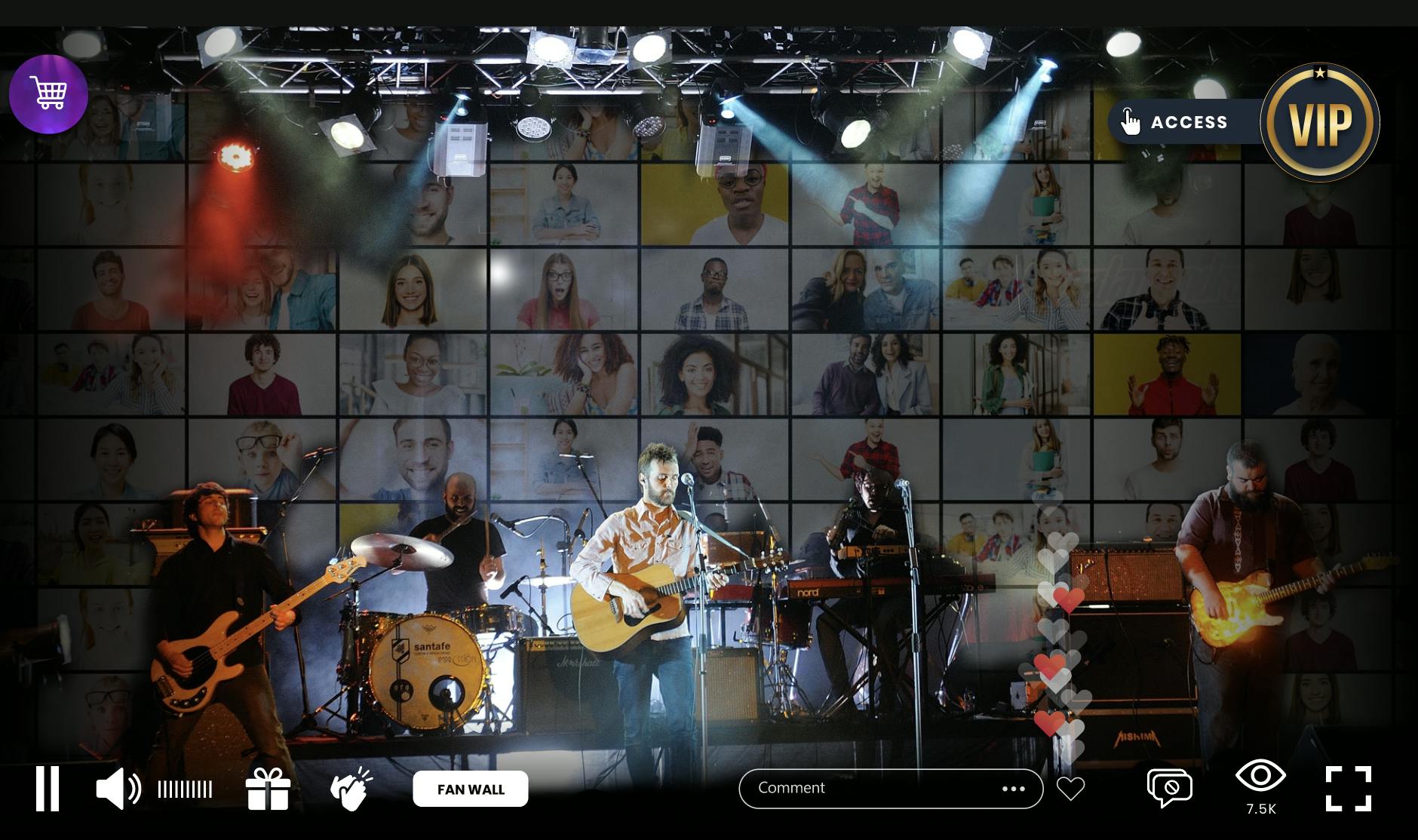The task of maintaining fan engagement with an increasingly demanding audience via digital channels has taken on extra significance over the past year.
Even before the pandemic though, it was clear that fans were craving a deeper level of social interaction during sports events that real-time engagement (RTE) can bring.
In 2018, a PwC study found that 56 per cent of fans wanted more interactive features during sports coverage. With the pandemic having starved human-to-human interaction, sports rights-holders have continued to plough resources into attempting to open up unsynchronised two-way conversations via social media, retrospectively measuring ‘engagement’ through numbers of likes, retweets or comments.
However, it is no secret that relying on third-party social platforms is imperfect, especially as they own the user data.
Additionally, sports rights-holders have struggled to attract and retain younger viewers since the release of the first Apple iPhone in 2007 triggered a sharp increase in the global use of smartphones and social media platforms. Between 2007 and 2017, the average viewing age increased for 23 of the 24 most high-profile professional sports.
Therefore the challenge for rights-holders is to adapt their approach and bring social media elements in house so they are able to learn more about their audience and generate a new revenue stream, especially among younger demographics.
What is RTE?
RTE in the digital space operates in the same way as face-to-face engagement in the physical world.
Sitting next to a fellow fan at a stadium, for example, allows for a deeper and more personal one-on-one conversation than an exchange of messages between mobile devices.
Similarly, the instinctive ability to recognise the body language and tone of voice from a fellow viewer on a digital platform adds context to their words, enabling swift reactions to drive further engagement and a richer experience. For this reason, the concepts of ‘social video’ or ‘social audio’ have become increasingly renowned elements of RTE.
With digital RTE, dozens of friends can be invited to join a ‘watch party’ for a game, allowing viewers to mingle like they would if they were in the stands. Indian over-the-top subscription streaming service Disney+ Hotstar offered such social watching experiences during the 2020 Indian Premier League Twenty20 cricket tournament.
Additionally, a ‘fan wall’ allows hundreds of remote fans to be shown in the background screen during a break in a game, bringing the offline experience to an online setting. This solution has been used widely in the concert sector already.
Therefore, in sport, RTE can allow a fan to become part of a virtual community before, during and after an event. This community is fuelled by real-time interactivity and the feeling of being virtually together, just like the most popular social media applications. However, there are also opportunities to personalise the offering for individuals, ensuring a truly dynamic experience by allowing fans to watch games with their friends or even celebrities.
As a result, those at the cutting edge of RTE believe that it can become an established fifth pillar of revenue, sitting alongside media rights, licensing and merchandising, sponsorship and ticketing.
Additionally, a byproduct of having the fans on an in-house platform, or sitting on top of a broadcast platform, is that brands can activate commercial partnerships more effectively, which should in turn lead to a positive impact on sponsorship revenues.
However, most rights-holders remain unaware that, for example, live interactive video and social media features can be combined to create an enticing and profitable proposition, enabling powerful RTE and revenue growth.
It is unlikely that such a lack of awareness will be tolerated by sports fans in the future, though, with genuine RTE set to become an expectation for viewers in the near future, accelerated by evolving consumer habits resulting from Covid-19.
Why RTE matters
The results speak for themselves. Clients of Agora, an interactive and live-streaming technology provider, have reported a 1,800 per-cent increase in user time spent, a 1,000 per-cent increase in the fan base and a 2,000 per-cent increase in revenue, all within one year of introducing RTE.
A basic entry fee or subscription model can be deployed to support a platform offering RTE, while the rights-holder can also give the user the option of leaving monetary ‘tips’.
The monetisation opportunities go further, though, thanks to the range of engagement channels available through such platforms.
For example, a viewer may wish to pay extra to access exclusive content such as watch parties, unique camera angles, pre- and post-match interviews, trivia games, talk shows and real-time ecommerce opportunities.
“There are sensational short-term benefits, but from a long-term perspective, there is a chance to evolve into a new type of social media,” says Brighton Shi, Senior Product Marketing Manager at Agora.
Challenging misconceptions
One of the misconceptions of RTE is that it requires significant ongoing production resources from the rights-holder. In fact, successful RTE strategies are underpinned by user-generated content.
As is the case with social media in sport, most of the interactions are between friends, with RTE built for fans to be an active participant, and not just view or ‘like’.
RTE features can provide differentiation when compared to other platforms and attractions. This is especially important when it comes to engaging younger sports fans.
“Introducing real-time engagement is a good way for rights-holders to secure and expand their fan base, especially in terms of winning the attention of Generation Z,” says Shi, who adds that new forms of RTE supported by augmented reality and virtual reality represent the natural next step.

Tech challenges to RTE
For tech-savvy youngsters who are addicted to their mobile devices and have grown up on a diet of ever-improving mobile data and internet speeds, limitless on-demand options and instantaneous interactions have become expectations.
The difficulty is that latency of between 10 and 20 seconds is still common with CDN (content delivery networks) accelerating monodirectional live streaming on the internet. Such long delays ruin real-time interactions as they can lead to some viewers reacting to crucial incidents, like a goal, before others have seen the action take place.
That is why low latency will make RTE effective in the future of sports consumption and why Agora, for example, has focused on ensuring a delay of less than one second and provided many of their clients with real-time audio and video capabilities with ultra-low latency.
High synchronisation – not just between the host and the audience, but also among audience members – is also vital to RTE, ensuring that viewers are not disadvantaged by delays when they want to ask an interviewee a question or participate in a quiz.
The low latency and high synchronisation are driven by Agora’s software-defined real-time network, which serves as an overlay network with high availability in global coverage, whilst partnering with audio and video codec in the software development kit to boost performance in areas where there is weaker wireless and internet coverage.
With such technological developments allowing an increasing number of sports fans worldwide to engage with each other, as well as the action, the opportunity to drive deeper relationships with fans through real-time interactions is set to become unmissable for rights-holders and brands.
To learn more about how RTE can transform your business, email: shiliang@agora.io
To read the second article in this series – How to engage with your fans in real-time – click here.